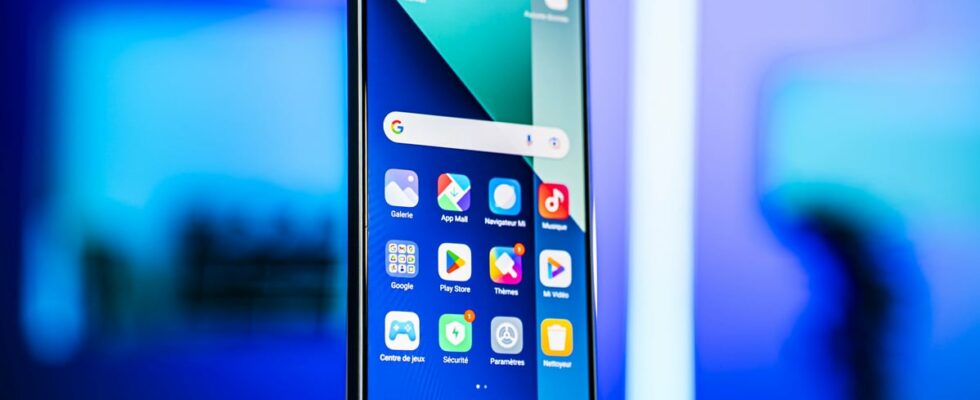In the unforgiving world of smartphones costing less than 250 euros, the Xiaomi Redmi Note 13 lands on familiar, if not conquered, territory. Indeed, in this market segment, the Chinese manufacturer is very powerful. We were therefore waiting with some impatience to test the one that aims to be the most attractive and efficient of entry-level mobiles. The Redmi Note 12 impressed us with the presence of a 120 Hz OLED screen. With the 13, Xiaomi remains on its path and refines the quality of the display. Now let’s see if he worked as well on the other aspects.
Xiaomi Redmi Note 13 4G Technical sheet
This test was carried out using a phone loaned by the brand.
Xiaomi Redmi Note 13 4G Design
The Xiaomi Redmi Note 13 takes care of the aesthetics of its new model. Although the front is very close to that of the Note 12, we notice that, even if the edges are also thin, the chin is much less prominent. The 6.67-inch screen, with a punch-hole in the center of its upper part, is protected by Gorilla Glass 3.
The back is more worked, we no longer have the frame which rather roughly identified the Note 12. Here, the three sensors and the flash are integrated discreetly into the shell and only protrude by around 3 mm. The rear surface is smooth, but becomes a little slippery during prolonged use. Plus, it easily captures fingerprints. It’s not the worst in the business, but regular cleaning with a cloth is necessary to maintain its beauty.
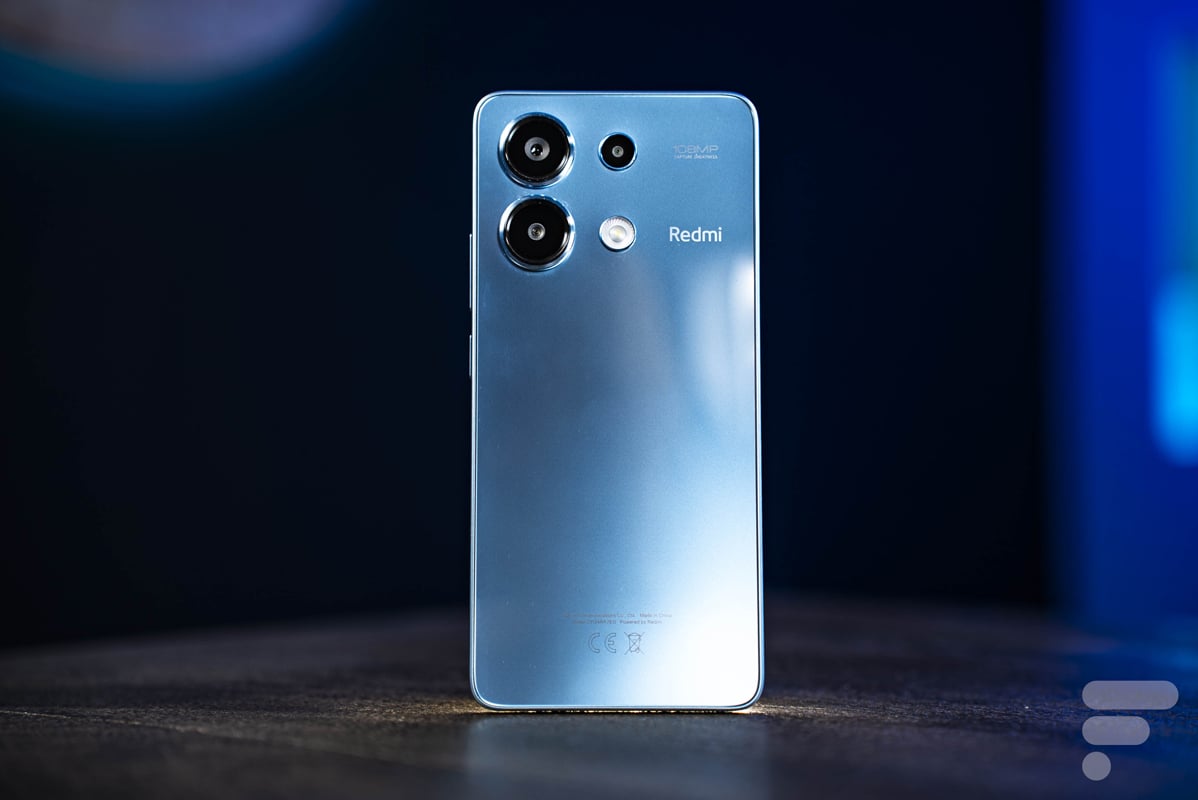
The plastic edges are inspired by those of the latest iPhones, flat with a fairly aesthetic metal effect. The whole thing is nicely worked and has the same color as the back. The Redmi Note 13 is available in Midnight Black, Mint Green and Frost Blue. Note that on these last two versions, fingerprints are less visible.
The whole benefits from a quality design, with a very good level of assembly. It also offers IP54 certification, for increased resistance to dust and the ability to resist splashing water. In terms of dimensions, the Redmi Note 13 measures 161.2mm in height, 76.4mm in width and 8.3mm in thickness. The total weight is 199 g, which places it in the high average of smartphones.
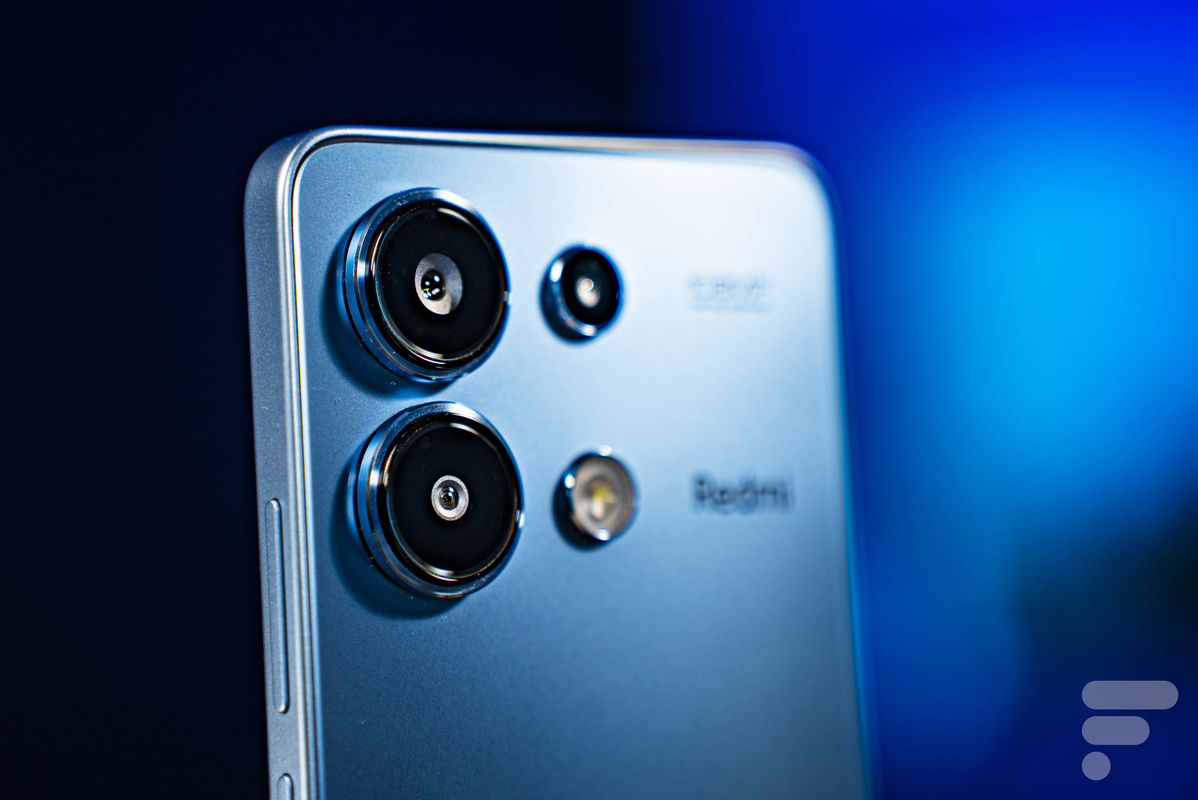
Which does not prevent it from offering a comfortable grip and a satisfactory size/weight ratio. The button layout is classic: on the right side is the power button and just above it we find two buttons dedicated to volume. They are well positioned, easily accessible and responsive.
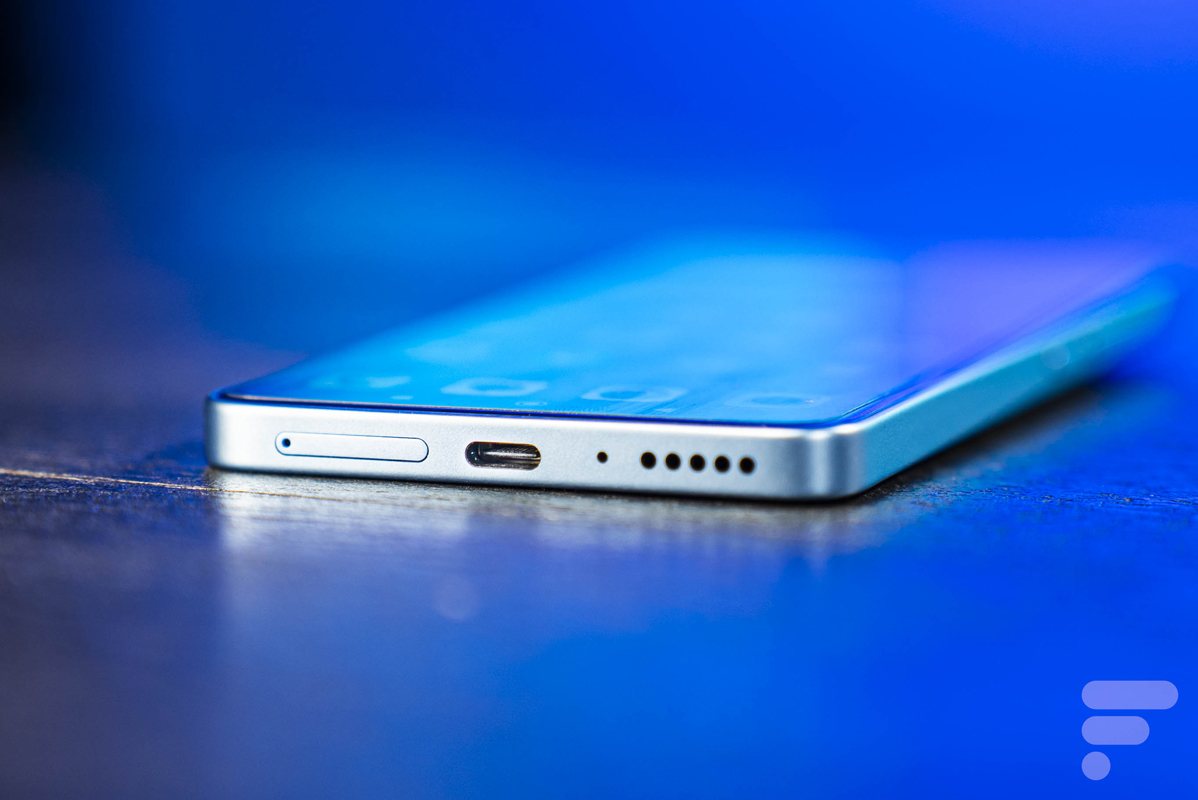
The bottom edge features a USB-C port for charging, flanked by a main speaker and microphone. On the upper edge, a pleasant surprise: the presence of a 3.5 mm jack socket. An increasingly rare and yet always appreciable basic.
Xiaomi Redmi Note 13 4G Screen
The Xiaomi Redmi Note 13 is equipped with a 6.67-inch Amoled panel with a resolution of 2400 x 1080 pixels. It therefore displays a density of 395 pixels per inch, ensuring a fine display. Although it is an entry-level model, the Redmi Note 13 offers, like its predecessor, a refresh rate adaptable to 60 or 120 Hz. This is a very appreciable technical characteristic and still rare in the smartphone segment for less than 200 euros.


We measured this screen using our probe and CalMAN Ultimate software from Portrait Displays. We created them by opting for the Standard display mode which ensures the most faithful rendering.
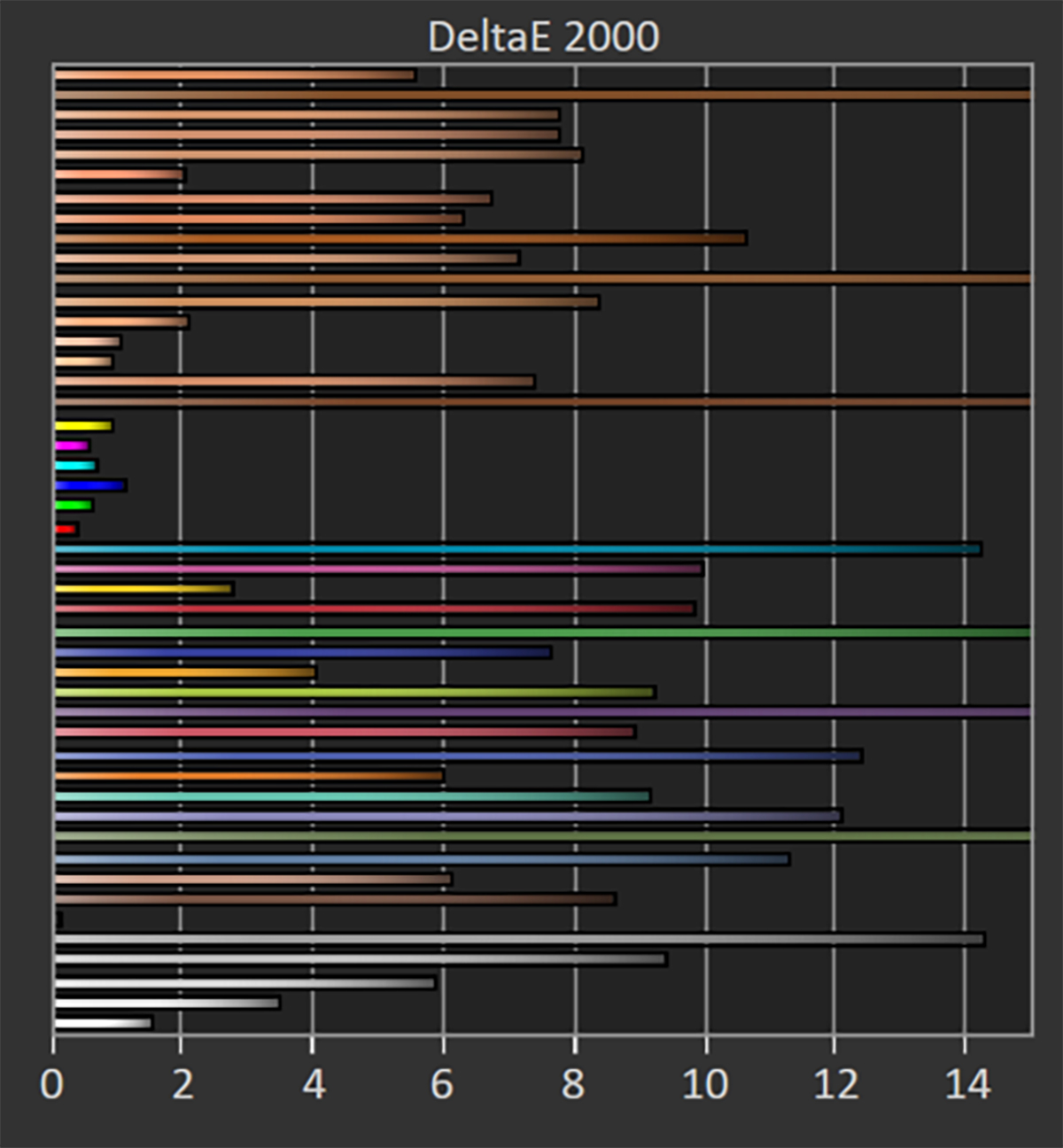
The panel displays a color temperature of 6,334K compared to 6,500K for the reference value. The color spaces are very well handled by Xiaomi with here 170% of the sRGB space and 114% of the DCI-P3, and 77% of the BT2020. This screen is capable of offering a very beautiful range of colorimetric nuances. The measured Delta E is 8.17, well away from the reference value which is three. However, we are surprisingly surprised by the fidelity on primary colors and certain skin tones.
The measured brightness is 858 cd/m² on average, which allows the smartphone to be used with some comfort even in direct sunlight, but be careful the screen is quite sensitive to reflections. If Xiaomi offers us here a screen that is not perfect, it offers excellent performance at this price level and proves to be capable of doing better than certain products at more than 400 euros.
Xiaomi Redmi Note 13 4G Software
The Xiaomi Redmi Note 13 features MIUI 14, the latest iteration of Xiaomi’s UI, based on Android 13. This interface is feature-rich and offers plenty of customization possibilities. Although, on the latter point, ColorOS seems to offer more variety.
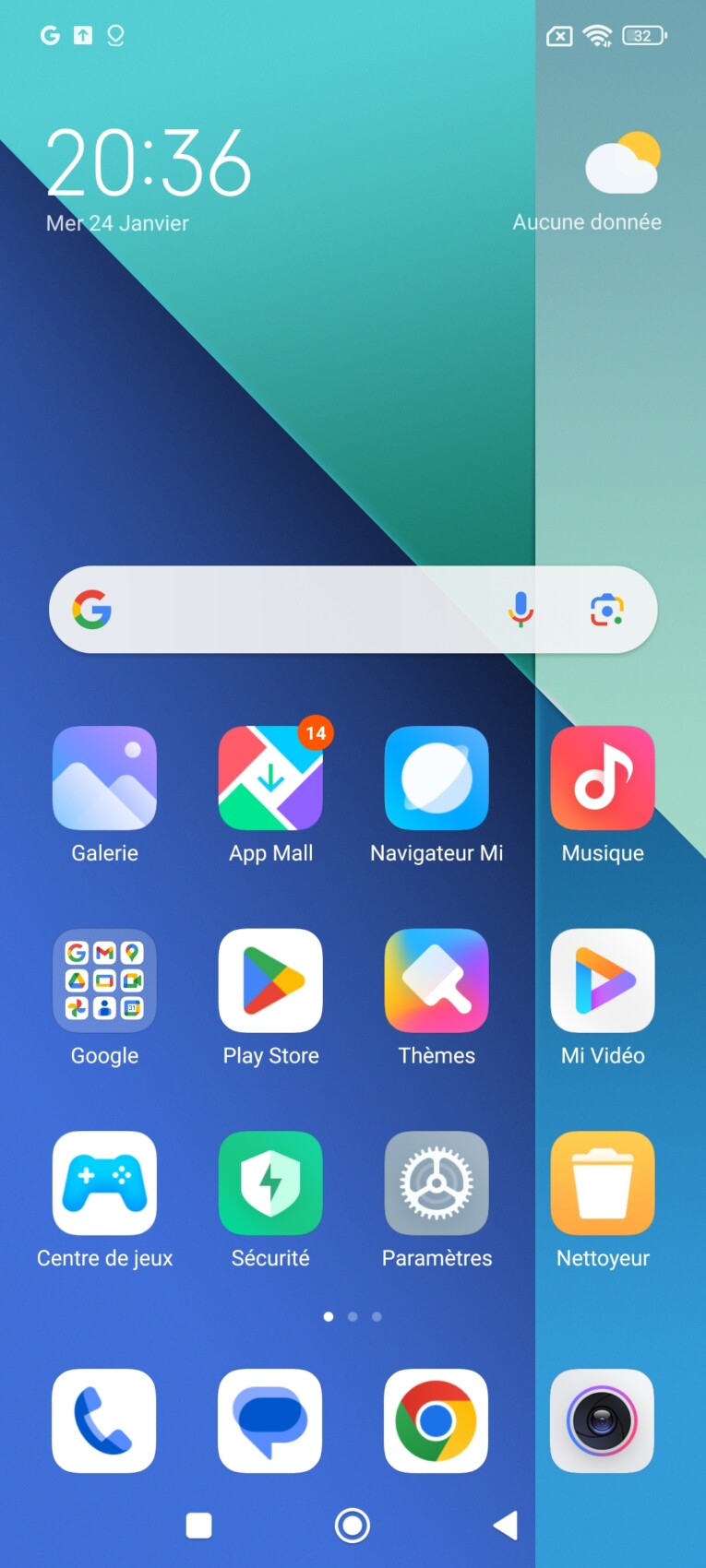
MIUI 14 also includes practical features, such as a game mode. However, in use, it does not provide any performance gain. However, it remains practical so as not to be disturbed by notifications.


On the other hand, why does Xiaomi waste our precious time by forcing us to uninstall a bunch of more or less useful applications, pre-installed by Xiaomi? In addition, several applications cannot be uninstalled, and their added value is more than questionable, such as the uninteresting application store overloaded with advertising.
Xiaomi Redmi Note 13 4G Photo
Here is the photo configuration of the Redmi Note 13:
- Main camera: 108 Mpx, f/1.75;
- 8 MP ultra-wide-angle camera, f/2.2, 118°;
- Macro: 2 MP, f/2.4.
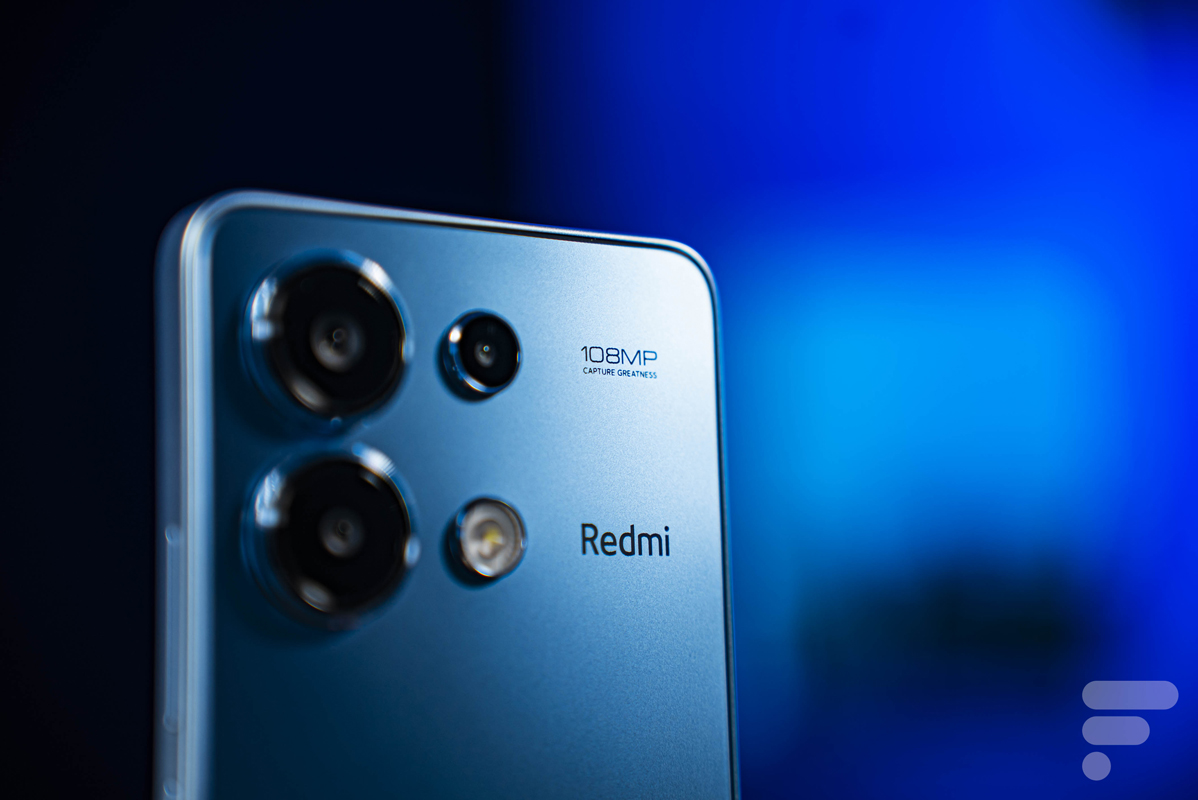
An imposing 108 Mpx sensor in a smartphone for less than 200 euros, we are very cautious. Especially on more high-end products, the manufacturer has not always been able to demonstrate its technical mastery. The photos are captured in 12 Megapixels, and in broad daylight, we obtain an honorable result, but nothing more. For social networks, for example, and other small display formats, this will be more than enough. We have good contrast, the brightness is managed quite well, and the colors, although pale, are quite natural.
On the other hand, we have a glaring lack of details. This lacks precision and we notice a strong smoothing which causes the photos to lose a lot of relief. Worse still, the brightness only needs to be a little lower for the digital noise to be present.

If we activate the 108 Megapixel mode, the overall rendering of the image is quite close to daytime. The gain in detail is noticeable, but not more.

Knowing that the weight of the photo is then multiplied by 3 or 4, it is not certain that the game is worth the effort.
We therefore have an ultra wide-angle mode which offers services close to that of wide-angle. However, the sensitivity to light is much greater and it is enough to have a cloudy sky to drastically lose quality. Xiaomi’s efforts to control deformation at the edges should be noted.
The x2 zoom is honest, with a level of detail almost equivalent to normal mode.
On the other hand, the x5 zoom accentuates the loss of details and must be used with caution.
At night, the ultra wide angle mode is almost unusable. In normal mode on the other hand, we significantly gain in quality compared to previous generations. However, Xiaomi started from so far that we have here an acceptable result but nothing more. As long as you have sufficient light sources in the environment, you can enjoy decent photography. Otherwise, it’s a festival of noise and smoothing.
The x2 and x5 zooms are also not recommended, because we really have shots that are not very usable.
We are very far from what a Pixel 6a can offer, but we must not forget that this Redmi is launched at 199 euros. In this price segment, this product comes out on top.
Portrait and selfie mode

The portrait mode of the Redmi Note 13’s back module achieves very clean clipping. You really have to have very curly hair to notice big flaws. The color rendition is still a little pale, which also affects the skin tone. The level of detail is just okay; for example, beard hair is a little too straightened.

The front camera of the Redmi Note 13, featuring a 16 MP sensor with an aperture of f/2.4, does a good job. The clipping is quite precise, but we notice that the transition zones between the bokeh and the sharpness sometimes leave something to be desired. In addition, the smoothing is also a little aggressive here, although it is less pronounced than on the back module.
Xiaomi Redmi Note 13 4G Performance
The Xiaomi Redmi Note 13 is powered by the Qualcomm Snapdragon 680 processor. This octa-core chip is coupled with 4, 6 or 8 GB of RAM, and storage space of 128 or 256 GB. The 3D part is supported by a GPU Adreno 610. A technical sheet which is not very fresh, even a little dated, but which has already proven itself.
This results in a fairly fluid Android on a daily basis. We still have some slowdowns from time to time, and applications that are very well managed. Unless you launch very heavy applications or abuse multitasking, this product most often responds quickly to all our requests.
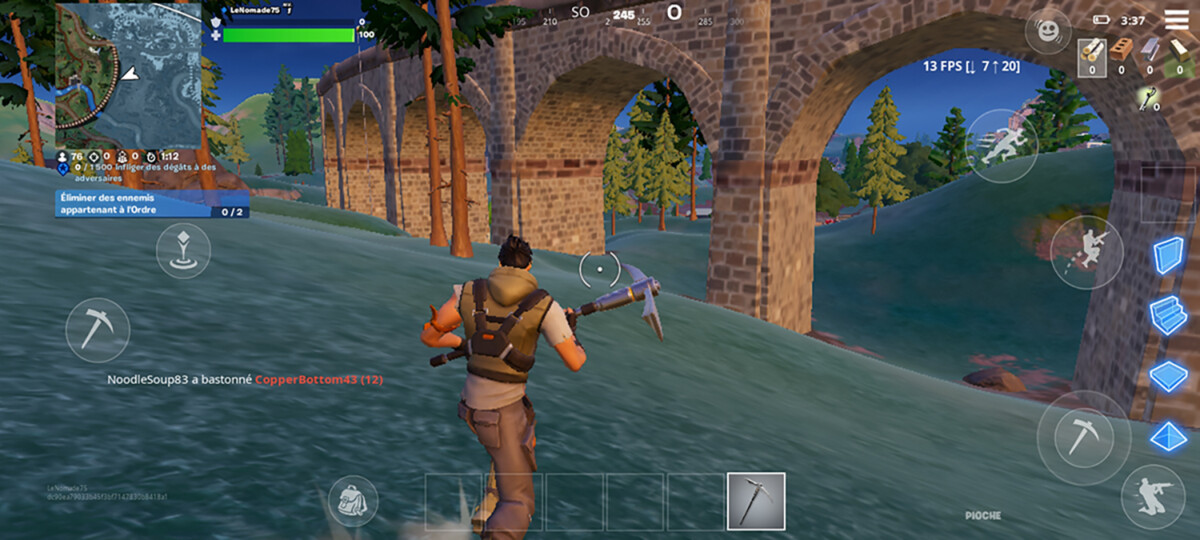
Now let’s talk about the subject that will anger gamers. The power offered by the Redmi Note 13 is not enough to enjoy the latest 3D games in all their splendor. Thus, with all options at a minimum, the device struggles to remain stable, with animation that oscillates between 11 and 18 fps. Suffice to say that it is almost unplayable, and this is repeated on the majority of flagship titles like Genshin Impact.
Xiaomi Redmi Note 13 4G Autonomy
The Xiaomi Redmi Note 13 has a 5,000mAh battery, which is quite generous. We launched our personalized, automated testing protocol, ViSer, which simulates active smartphone use (web browsing, texting, calling, video, listening to music, downloads, etc.).
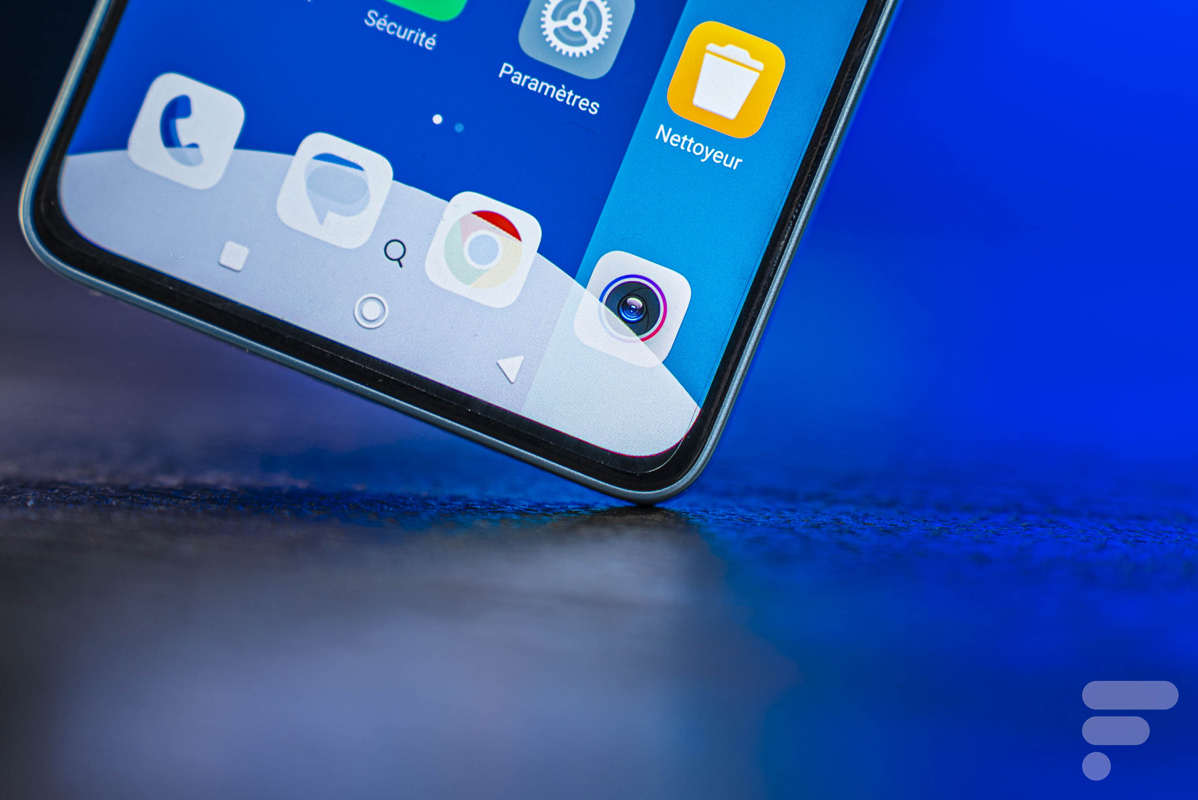
The phone lasts around 11 hours and 8 minutes. It is in 93rd place out of the 95 smartphones we tested with this protocol. It therefore ranks in the good average, comparable to a Xiaomi 13T Pro or a Galaxy A53. If you don’t overuse notifications or video games, it can last a little more than a day.
It comes with a 33W charger, which allows you to recover 1% battery in five minutes; 30% in 15 minutes, 50% in just under thirty minutes, and a full charge in around 70 to 75 minutes.
Xiaomi Redmi Note 13 4G Network and communication
This smartphone supports 4G frequency bands (LTE FDD: 1/3/5/7/8/20/28 and LTE TDD: 38/40/41). Add Wi-Fi 5, Bluetooth 5.1 and NFC and you’re good to go. Regarding the calls, nothing to report.
Finally, the integrated GPS works without difficulty and we did not notice any geolocation problems.
Xiaomi Redmi Note 13 4G Price and availability
The Xiaomi Redmi Note 13 is available for 199 euros from partner resellers.
Where to buy
Xiaomi Redmi Note 13 4G at the best price?
